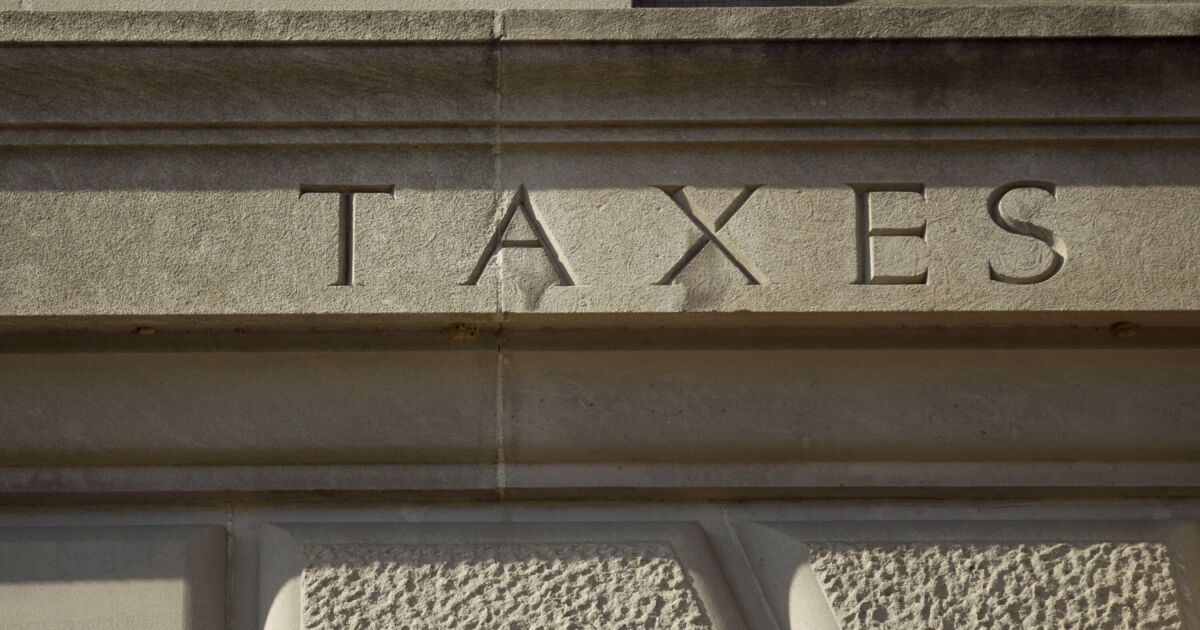
As April's tax deadline nears, so does the risk of disruptions in U.S. funding markets, according to Wall Street analysts.
That's because, broadly speaking, the annual rush to pay Uncle Sam tends to suck hundreds of billions of dollars from the banking system. With Americans expected to owe more than usual this year due to higher incomes and a booming stock market, bank reserves could potentially fall below a key level many speculate is critical to funding-market stability.
For some, it's rekindling memories of 2019, when a sudden increase in corporate tax payments along with a slug of bond issuance and other factors prompted demand for liquidity to suddenly surge, causing overnight lending markets to go haywire and forcing the
"The most important thing to watch out for is how close we're actually getting to the lowest comfortable level of reserves," said Teresa Ho, head of short-term interest-rates strategy at JPMorgan Chase & Co. "This time we're seeing liquidity being withdrawn from the system. It's a slightly different dynamic than month- and quarter-end, but still has the potential to be disruptive."
Bank reserves, cash that institutions park at the Fed to meet unexpected demands, stand at $3.62 trillion, and with Wall Street forecasting potential tax-related outflows nearing at least $400 billion, reserves could slide close to the comfortable level generally seen in the low $3 trillion level.
Meanwhile, money-market fund assets dropped as the tax deadline nears. Assets parked by individuals in government funds — which invest primarily in securities like Treasury bills, repurchase agreements and agency debt — fell by about $10.3 billion, almost double the outflows seen in the week before tax day in 2022.
In short-term funding markets, the first place any tax-related stresses are likely to appear is in a rising Secured Overnight Financing Rate — a key benchmark tied to day-to-day needs of the financial system — as investors scramble for cash and liquidity dries up, according to Ho. Volumes in the federal funds market should also be watched for a pickup in borrowing activity, she said.
SOFR hit peaks at the end of November and December amid a confluence of events including banks paring back lending for regulatory purposes.
So far, cumulative tax receipts for individuals through March are $44 billion higher than the same time last year, according to strategists at Societe Generale, led by Subadra Rajappa, who predict a stronger April this year than in 2023 when it was $381 billion, but not as strong as 2022.
Two years ago, the Treasury collected nearly $600 billion in tax revenues due to an exuberant stock market and a powerful economic recovery, and $446 billion left the banks, according to government and Fed figures. Those payments are deposited in the Treasury General Account, or TGA, which operates like the government's checking account at the central bank. The Fed keeps tabs on this side of the balance sheet because as TGA rises, reserves fall.
Back in 2022, the effect on funding markets was negligible because the Fed had yet to start unwinding its balance sheet, a process known as quantitative tightening. Even after the tax-related decline in reserves, institutions still had about $3.32 trillion parked at the central bank and roughly $1.8 trillion stashed at the overnight reverse repo facility, or RRP, a barometer of excess liquidity in the financial system.
While reserves are higher now, there's concern that this month's tax-related drain will pull the total down to the lowest comfortable level around $3 trillion to $3.1 trillion, according to a New York Fed
Factor in RRP levels tumbling by three-fourths over the past two years, and market watchers are on alert for a potential liquidity squeeze and even the Fed is debating when to slow its balance-sheet unwind to avert another 2019 event sent overnight funding costs skyrocketing.
Chair Jerome Powell said
"The Fed is really scared by the ghost of 2019," said John Velis, a foreign-exchange and macro strategist at Bank of New York Mellon Corp., who estimated the drawdown in reserves of around $500 billion if payments behave more like 2022. "They're generally afraid that if 2019 happens again in some form or another, they're going to wind up reversing QT and expanding the balance sheet."
In
Fast forward, and fears of such ructions this time around appear unfounded, according to some market watchers.
More robust tax receipts mean the Treasury could issue less short-dated debt. With diminished supply, excess cash in the front-end of the market could wend its way into the Fed's RRP facility as a liquidity backstop, according to Bank of America Corp. strategists including Mark Cabana and Katie Craig, who anticipate funding markets will likely stay well-behaved.
For BNY Mellon's Velis, it's wait and see. Risks remain with individuals dipping even more than usual into their bank accounts to cover the tax bill as they avoid taking cash from other vehicles that yield well above 5%. There's also the large pool of California taxpayers, who had extensions for natural disasters last year, now facing the April deadline.
"If we see repo rates spike in the middle of the month then you'll know there's a problem," Velis said. "There's a nontrivial chance and that's enough to be aware of."



